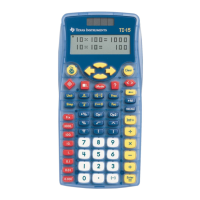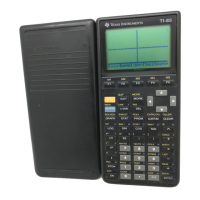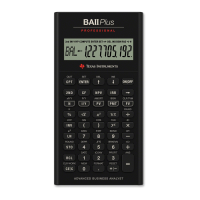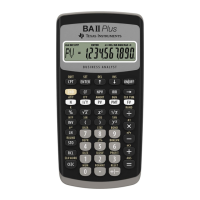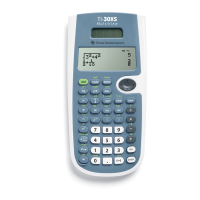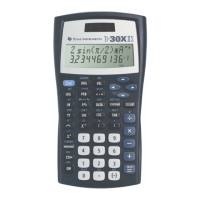830 Appendix A: Functions and Instructions
Input [
promptString
,]
var
Input
[
promptString
],
var
pauses the program,
displays
promptString
on the Program I/O screen,
waits for you to enter an expression, and stores
the expression in variable
var
.
If you omit
promptString
, “?” is displayed as a
prompt.
Program segment:
©
:For i,1,9,1
: "Enter x" & string(i)! str1
: Input str1,#(right(str1,2))
:EndFor
©
InputStr CATALOG
InputStr [
promptString
,]
var
Pauses the program, displays
promptString
on the
Program I/O screen, waits for you to enter a
response, and stores your response as a string in
variable
var
.
If you omit
promptString
, “?” is displayed as a
prompt.
Note: The difference between
Input and
InputStr is that InputStr always stores the
result as a string so that “ ” are not required.
Program segment:
©
:InputStr "Enter Your Name",str1
©
inString() MATH/String menu
inString(
srcString
,
subString
[,
start
]) ⇒
⇒⇒
⇒
integer
Returns the character position in string
srcString
at
which the first occurrence of string
subString
begins.
start
, if included, specifies the character position
within
srcString
where the search begins. Default
= 1 (the first character of
srcString
).
If
srcString
does not contain
subString
or
start
is >
the length of
srcString
, returns zero.
inString("Hello there","the")
¸ 7
"ABCEFG"! s1:If inString(s1,
"D")=0:Disp "D not found."
¸
D not found.
int() CATALOG
int(
expression
) ⇒
⇒⇒
⇒
integer
int(
list1
) ⇒
⇒⇒
⇒
list
int(
matrix1
) ⇒
⇒⇒
⇒
matrix
Returns the greatest integer that is less than or
equal to the argument. This function is identical
to
floor().
The argument can be a real or a complex number.
For a list or matrix, returns the greatest integer of
each of the elements.
int(ë 2.5) ¸ ë 3.
int([-1.234,0,0.37])
¸
[-2. 0 0.]
intDiv() CATALOG
intDiv(
number1
,
number2
) ⇒
⇒⇒
⇒
integer
intDiv(
list1
,
list2
) ⇒
⇒⇒
⇒
list
intDiv(
matrix1
,
matrix2
) ⇒
⇒⇒
⇒
matrix
Returns the signed integer part of argument 1
divided by argument 2.
For lists and matrices returns the signed integer
part of argument 1 divided by argument 2 for
each element pair.
intDiv(ë 7,2) ¸ ë 3
intDiv(4,5)
¸ 0
intDiv({12,ë 14,ë 16},{5,4,ë 3})
¸
{2 ë 3 5}
integrate See ‰
‰‰
‰(), page 907.

